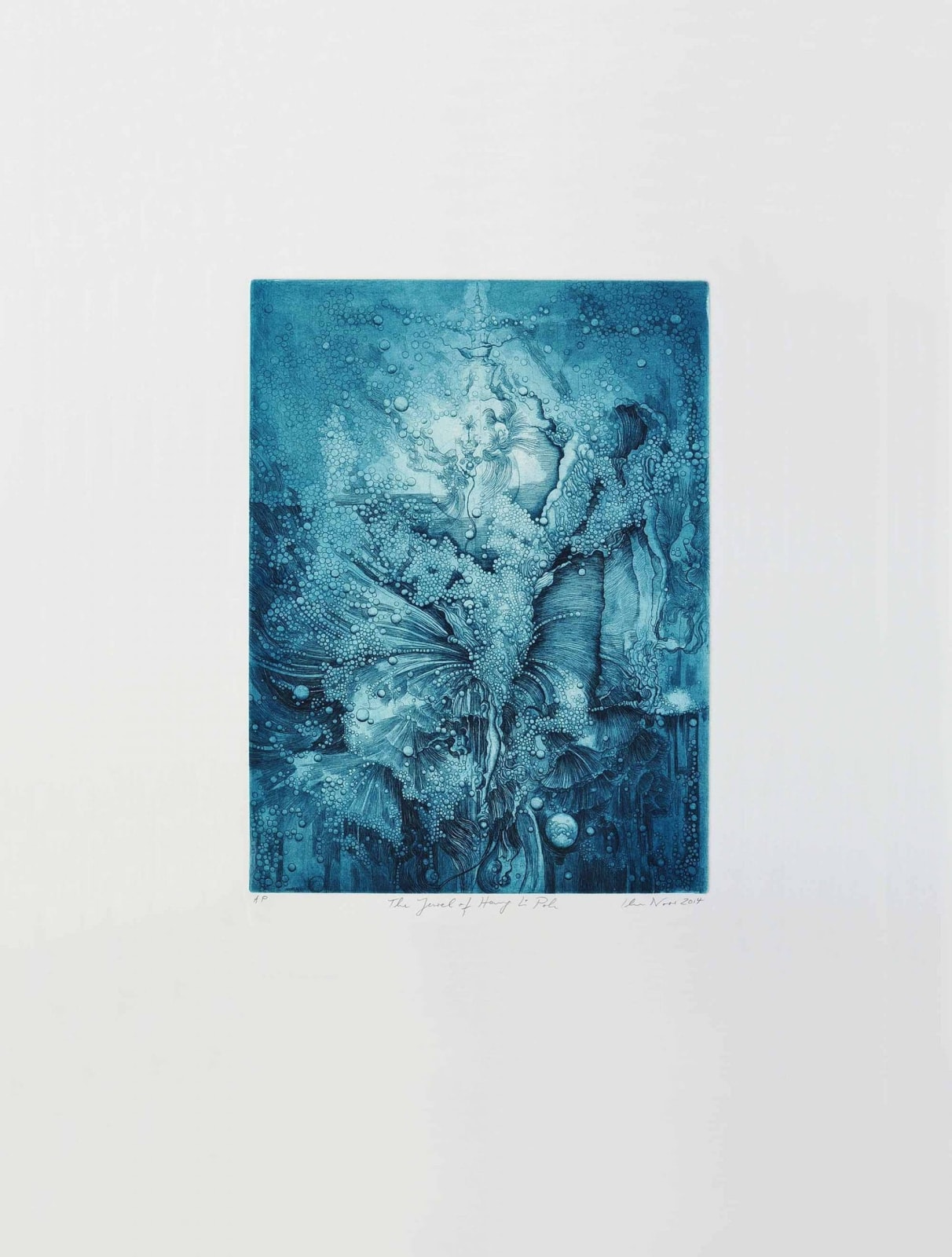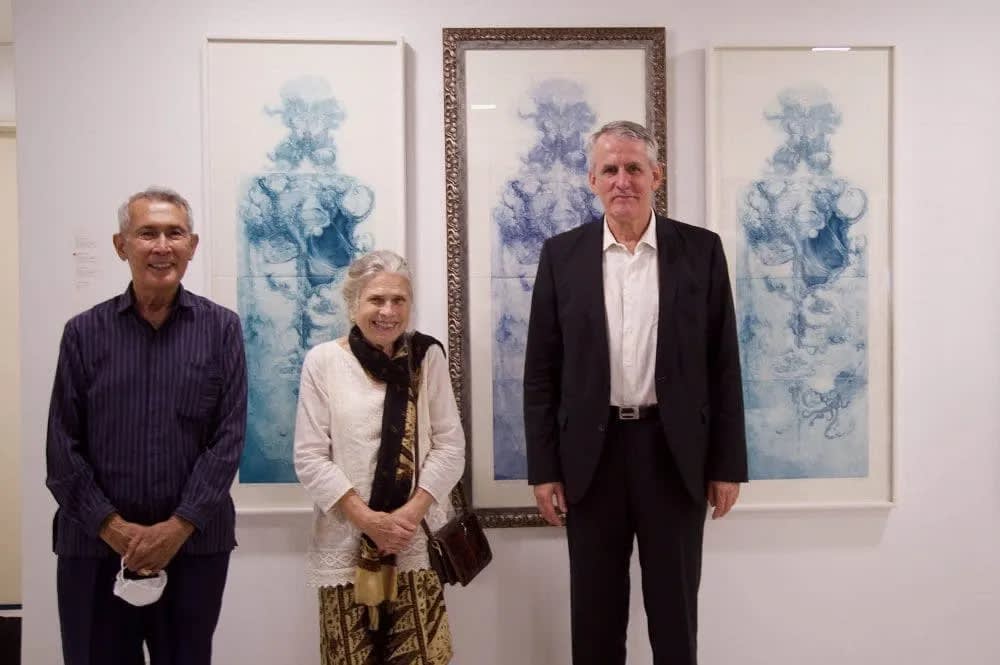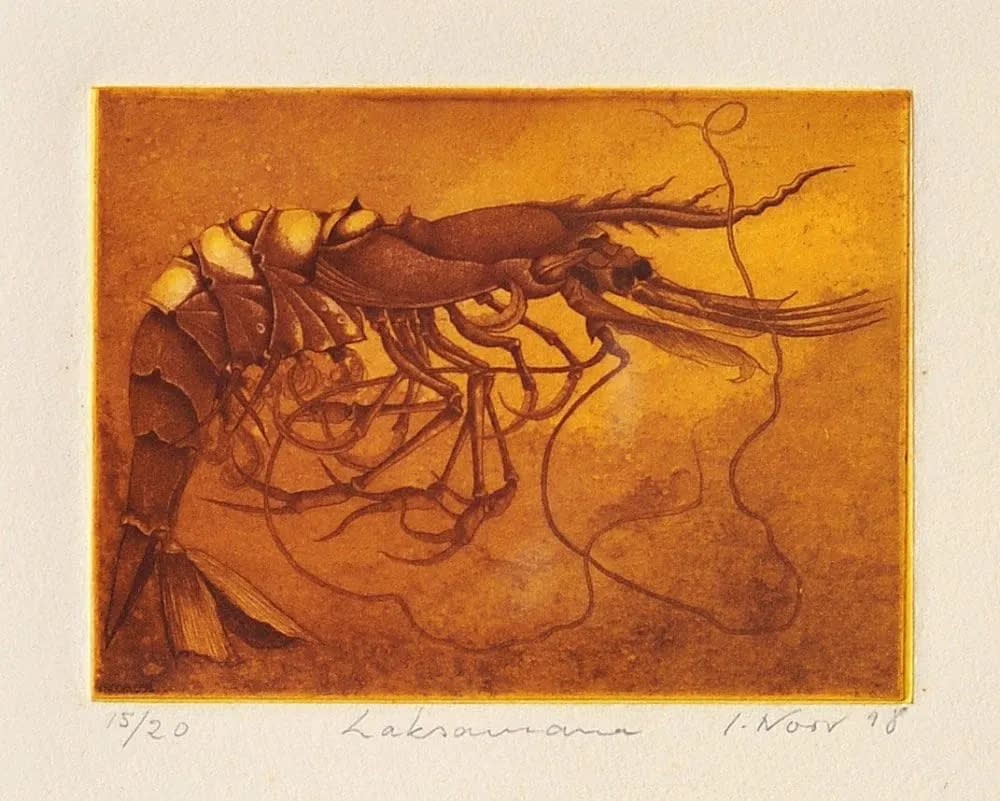It is a sunny morning as I walk into Ilse Noor’s beautiful home among the lush foliage of Lembah Beringin in Selangor.
She welcomes me. “Come in, come in. I am just baking a cake for our morning tea,” she says with a warm smile and old-school hospitality. She is weighing ingredients for the cake on a machine that is nearly a century old and which still functions precisely, a gift from her late aunt.
This visit is a breath of fresh air after nearly two years of intermittent lockdowns due to the COVID-19 pandemic. It is pleasure to be savoured, speaking to this 80-year-old artist and printmaker of German heritage who has made Malaysia her home.
Creativity amid hard times
Born in Wipperfürth, Germany in 1941, Ilse grew up during World War II.
“I lived in a heavily bombed area and we did not have anything to draw with as children. So we drew on the road, on stones and on walls of houses. It made some people very angry,” Ilse chuckles.
“In our school in the countryside, we had no pencils or stationery. We only had mini slate blackboards or papan hitam and we wrote with slate pencils. I learnt cursive writing on the board and the act of scratching on this blackboard later became an inspirational, and almost emotional, exercise for me and led to my love for etching.”
On Ilse’s website, she defines etching as line drawing etching and aquatint which belong to the Intaglio family, a printmaking technique where a design is incised into the surface of copper, zinc, or steel plate using a variety of methods.
“It (etching) came naturally for me as Intaglio reminds me of the time when I wrote on these boards. Although we had so little, I never wanted anything. I was happy learning my favourite subjects which were art, German, history, and music.”
Persistence and discipline
Ilse decided when she was about 15 years old that she wanted to begin lessons with Willy Maria Stucke, a fine art graphic artist, portrait painter, trained restorer of old oil paintings, and woodblock printers.
“I was the student he never wanted,” she said with a smile. “At that time, he was nearly 60 years old and never had a student. He much preferred to focus on his own work and continue as a full-time artist.”
Yet, Ilse persisted. “One day I walked to the forest and my brother-in-law found the stub of a tree root. I thought it looked interesting and spent about two weeks sketching it with a pencil. I showed Mr. Stucke the final work, and he did not say much, but finally, he told me, ‘Ok, you can come.’” With that, Ilse began her art lessons with the artist.
“For my first assignment, he took me to the rooftop of his atelier, an almost romantic workplace in a turret of an old shophouse in the centre of Bonn. He gave me a little stool, a pencil, and some paper and asked that I draw the outline of the city of Bonn.” Ilse noted, “He did not allow me to have an eraser.”
“I was bewildered. I did not realize that such a simple assignment could be so difficult. Theoretically, it was a simple thing – just the outline of the buildings, windows, and trees. But I had to think – what comes first, next, behind? I had to look very carefully and it took me hours to observe and to begin sketching.”
The discipline that she learnt during her time with Stucke stood her in good stead. “I had tough teachers,” Ilse said.
During her time with Professor Franz Nagel at the Academy of Fine Arts in Munich, they were pretty much left to their own devices, to explore and to bring their visual interpretations to their artworks.
If the Professor did not agree with the work and wished the student to take more effort and commitment, he would say loudly and with some sarcasm, “Nice little picture!”. “I would feel so stupid, but in my heart, I knew that he was right and started to change and improve,” Ilse said.
However, these experiences helped shape Ilse’s work as she applies the same discipline and detail to her works today. She said of this meticulous approach, “It is useful with etching as it is almost impossible to erase on a metal plate, without damaging other fine lines and work next to it.”
Going back to nature
Having grown up in the German countryside with forests, lakes, and misty landscapes, very similar to her current home environment in Malaysia today, Ilse continues to draw inspiration for her work from her natural surroundings.
Ilse’s “Legendary Prawns” series from 1998, originally submitted for the UNESCO Year of the Ocean exhibition, captures her whimsical take on the crustaceans, as denizens of the ocean.
They are elegantly portrayed as figures from Malay folklore – admirals and warriors, pirates and midwives. This series merges the artist’s powers of observation of nature with the legends of her adopted country, translating them into fine etchings with dancing lines.
Meanwhile, in the majestic “Istana” series, Ilse reimagines seashells as enchanted castles.
“Using the organic shapes of seashells [Ilse] constructs grand underwater palaces…[the shells] represent the complex and interdependent relationship between nature and civilization.”
This series culminates in the latest work “Creation” (2021) which is the largest to date, using four copper plates to create a large piece of work.
Pauline Fan in her essay entitled “Ilse Noor and the Re-enchantment of Reality” mentions how Ilse’s work embraces German Romanticism in approach.
However, upon settling in Malaysia, Ilse “turned her imagination, artistic eye, and dexterous hands towards the realm of Malay folklore…breathing new life into the symbols, mythologies, and primordial mysteries of Malay culture and the Malay understanding of nature and the elements.”
Seeing magic in the everyday
Ilse continues, “If there is just one thing that I would like to share with the Malaysian art community, it is the importance of seeing. I find that these days, many have lost this gift of sight. Amid the hustle and bustle of life, we have forgotten how to see what is important and meaningful.
“If you know how to see things, you can draw or paint. These days many people just copy from what is already present and think it is already enough. It isn’t. It’s not even the beginning. You must see and experience it in real life. Go on-ground and go back to nature.
“Art isn’t just about drawing or etching. Feeling for your work is important too, as you create with your hands. Imagine the art of calligraphy, where your hands and body execute the strokes. You can’t be stiff. It’s hard to learn when you’re just sitting in a room by yourself.”
Always improving, creating long-lasting value
Finally, I ask whether Ilse has a favourite work.
“To be honest, I don’t. I try my very best with each piece, but when I look back, I see how it can be further improved. My aim is to continue to open people’s minds to something different so that they can start to see, and to capture it as best as possible with elevated etching techniques.”
As I observe Ilse’s pride in her work and devotion to bringing out the best in her craft, I am reminded of the century-old weighing machine in her kitchen – that handcrafted and precise instrument – which continues to remain in unspoiled working order and relevant a century later.
Original article can be found at https://www.eksentrika.com/ilse-noor-best-graphic-fine-artists/







